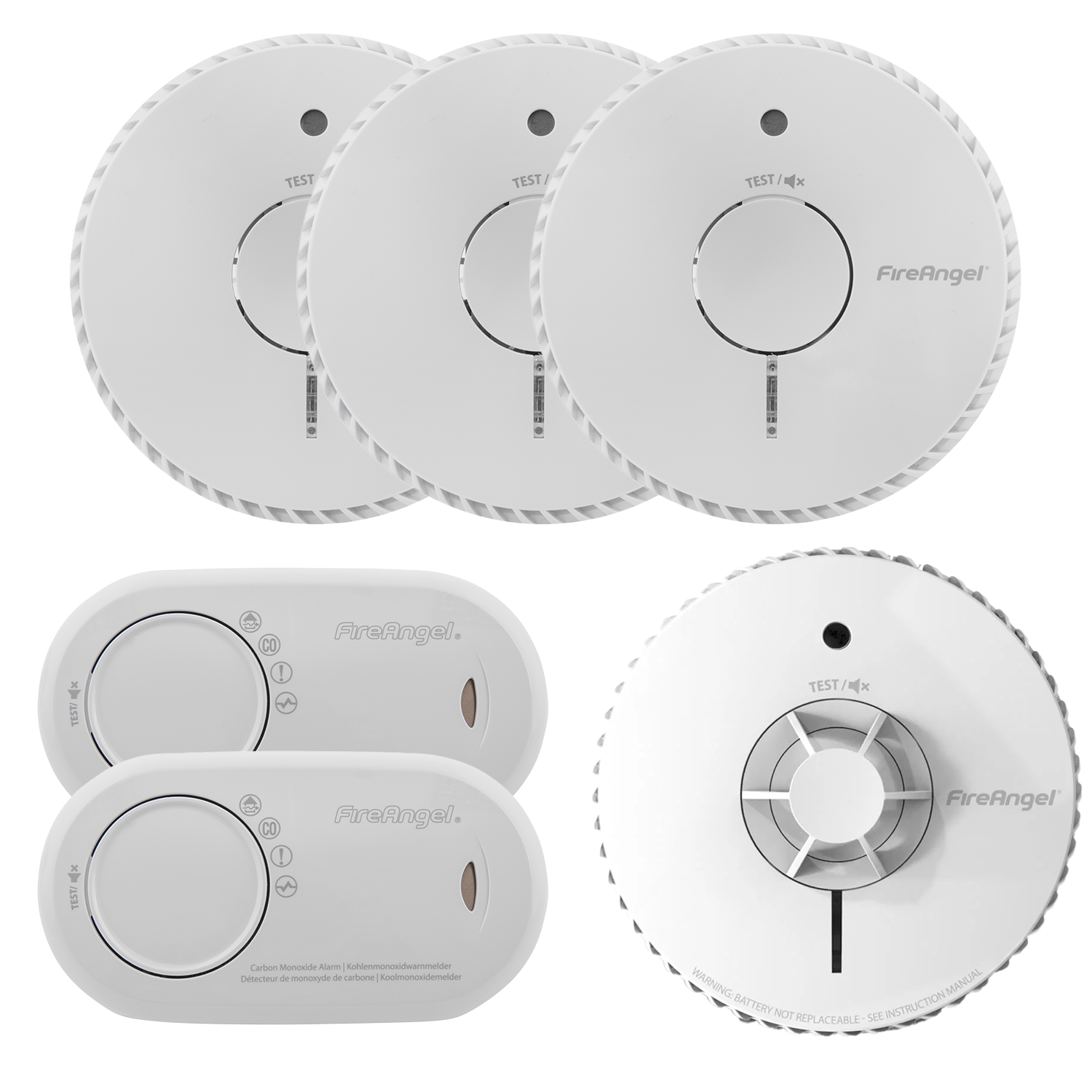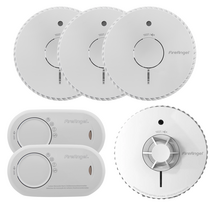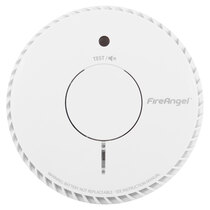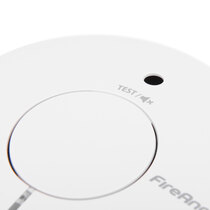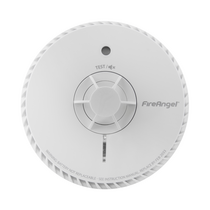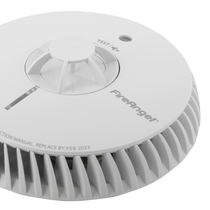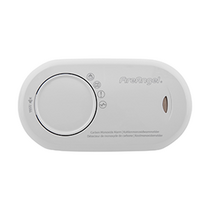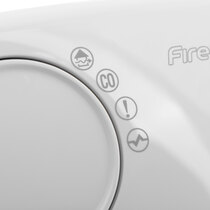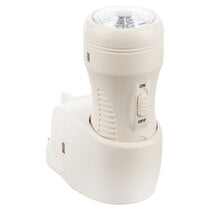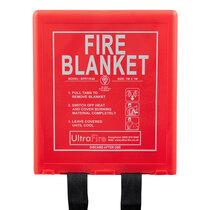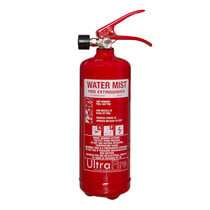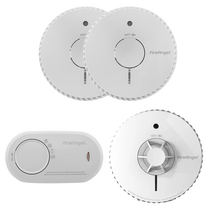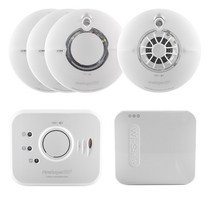-
Contact
Sales & Customer Service
0800 612 6537 support@safelincs.co.uk Live ChatDelivery Enquiries
0800 077 6149 - Resources
Fire & Safety Solutions
CALL OUR TEAM NOW 0800 612 6537
Lines open today 8am - 6pm
Quick Delivery
From £4.19 inc VAT
Live Chat - Online
Instant help & Advice
Trade Discounts
and exclusive pricing
0% Credit Available
Open an account now
5 Star Customer Feedback
Home Smoke and CO Alarm Starter Kit - FireAngel FAKIT2
Product Overview
Contents
Technical Data
FAQs (11)
The FireAngel home starter kit includes three smoke alarms, one heat alarm, and two carbon monoxide alarms, all powered by sealed 10-year lithium batteries for minimal maintenance and easy DIY installation. This kit ensures robust fire detection for most homes and provides a carbon monoxide alarm to alert residents to this silent threat, often produced by malfunctioning fuel-burning appliances. The optical smoke alarms are perfect for landings, bedrooms, and living rooms, while the heat alarm is suitable for kitchens, garages, utility rooms, and unconverted loft spaces. The carbon monoxide alarms should be installed near fuel-burning appliances like gas fires, boilers, and cookers.
- Battery: 10 year sealed lithium battery
- Product Lifespan: 10 years
- Warranty: 5 year warranty
- Easy to install
FireAngel FA6620-R Optical Smoke Alarm
- CE marked to BS EN 14604: 2005 and UKCA marked
- Optical sensor to identify slow burning fires
- Appropriate for installation in bedrooms, living rooms, hallways, and landings
- Featuring a central test / hush button allowing easy weekly testing
- The Sleep Easy™ function enables you to mute the low battery alert for up to 8 hours, ensuring an uninterrupted night's sleep
FireAngel FA6720-R Heat Alarm
- CE marked to BS EN 14604: 2005 and UKCA marked
- Suitable for installation in kitchens, garages, utility rooms, and unconverted loft spaces
- Ideal for travel accommodation such as caravans and motorhomes
- Large central test / hush button for convenient weekly testing
- The Sleep Easy™ function function mutes the low battery chirp for up to 8 hours
FireAngel FA3820 Carbon Monoxide Detector
- CE, UKCA and Kitemarked to BS EN 50291-1: 2018 (domestic use) and BS EN 50291-2: 2019 (camping / caravans / boats)
- A loud 85dB audible alarm sounds when the CO level reaches 50ppm
- The 'Pre-alarm' warning prompts ventilation of the property when low levels of CO are detected
- Features a low volume test function
- Silence both low battery and end of life warnings with the Sleep Easy™ function for up to 8 hours
| Item |
Amount
|
|---|---|
| FireAngel FA6620-R Optical Smoke Alarm |
3
|
| FireAngel FA6720-R Heat Alarm |
1
|
| FireAngel FA3820 Carbon Monoxide Detector |
2
|
| Product Code | FASTARTKIT2-HOME |
|---|---|
| Brand | FireAngel |
| Battery Type | 10 Year Sealed Lithium |
| Dimensions (HxDia) | Smoke Alarm: 31.5 x 118.1mm Heat Alarm: 42 x 118mm |
| Dimensions (HxWxD) | Carbon Monoxide Alarm: 67 x 125 x 33mm |
| Operating Humidity | Smoke Alarm: Up to 90% RH (non condensing) Heat Alarm: Up to 90% RH (non condensing) Carbon Monoxide Alarm: 30 to 90% (non-condensing) |
| Operating Temperature | Smoke Alarm: +4°C to +38°C Heat Alarm: +4°C to +38°C Carbon Monoxide Alarm: -10 °C to +40 °C |
| Sensitivity | Carbon Monoxide Alarm: 50ppm (parts per million) CO gas |
| Sensor Type | Smoke Alarm: Optical Heat Alarm : Thermistor Heat Carbon Monoxide Alarm: Advanced Electrochemical |
| Sound Output | Smoke Alarm Full Alarm Test: 85dB at 3 metres Smoke Alarm: Reduced Volume Test: At least 10dB below full volume Heat Alarm Full Alarm Test: 85dB at 3 metres Heat Alarm Reduced Volume Test: At least 10dB below full volume Carbon Monoxide Alarm: 85dB(A) at 3 metres (minimum) |
| Storage Temperature | Smoke Alarm: -20°C to +60°C Heat Alarm: -20°C to +60°C Carbon Monoxide Alarm: -20 °C to +50 °C |
| Warranty | 5 years |
| Weight | 0.75kg |
| Product Datasheets |
Q. What type of smoke alarm do I need?
A.
We recommend using an optical smoke alarm in hallways, living rooms, dining rooms and bedrooms, as they are good at detecting smouldering fires from soft furnishings and are less likely to be set off by cooking fumes from a connected kitchen.
Heat alarms are recommended for kitchens and garages as they do not sound false alarms from cooking fumes, vehicle fumes or steam.
Ionisation alarms are being phased out due to the small amount of radioactive material used in the detector chamber. Safelincs recommends optical smoke alarms where ionisation alarms were previously used.
Q. How do I test my smoke alarm and how often should I test it?
A.
We recommend testing alarms by pressing the test button built-in to the unit, as this is designed to simulate the detection of the target stimuli (usually smoke, heat, or CO) at the alarm sensor. For more detailed guidance, check the manual included with your alarm.
You should test your alarms regularly, preferably every week. Sign up to our free smoke alarm reminder service to receive regular reminders by email or text message.
Q. What is the difference between an ionisation and an optical smoke alarm?
A.
Optical smoke alarms, also known as photoelectric detectors, have a high sensitivity to large particles in the air. They are slightly quicker at detecting slow-smouldering fires that produce a lot of smoke (such as fire from soft furnishings). They are suitable for living rooms and sleeping areas and are used near kitchens as they are less prone to false alarms.
Ionisation smoke alarms use a small amount of radioactive material in the sensor chamber to detect fires, as such they are being discontinued. Safelincs encourages customers to purchase optical smoke alarms instead.
See also heat alarms for the most suitable protection in a kitchen.
Read more about how different smoke alarms work.
Q. Where should I install my carbon monoxide alarms?
A.
CO detectors should be installed near potential sources of carbon monoxide, essentially any fuel-burning appliances such as boilers, cookers and ovens, fireplaces (both open and enclosed burners), and portable generators. As you are likely to be most affected by CO in areas of your home that you spend the most time in it is advisable to install alarms in those areas as well, such as the living room and bedrooms. It is also worth noting that while one detector is better than no detectors at all, larger homes may require several detectors to cover the property fully.
Also note that carbon monoxide has been proven to spread into neighbouring properties through open windows and, in semi-detached or terrace houses, through loft spaces. If your property has an attached garage with a connecting door through to the house, it is recommended to fit a CO alarm inside the house leading from that doorway.
Battery powered carbon monoxide alarms can typically be installed wall-mounted or left free-standing on flat, level surface.
- Near an appliance: they should be placed within 1 to 3 metres horizontally from the appliance and between the height of the appliance to 150mm below the ceiling – i.e., not above a stove where it would be in the path of steam or fumes.
- In living spaces: they should be positioned close to where the occupant's head is likely to be most of the time – e.g., on your bedside table.
Combined smoke & CO alarms or mains-powered CO alarms are typically installed on the ceiling and should be at least 30cm away from any wall, light fitting, or other obstruction.
Do not install CO alarms within 3 metres of doors or windows, above radiators, or immediately close to anything that gives off steam or fumes like a cooker or shower room. Similarly, it is not recommended to install detectors in dusty areas such as workshops or garages.
For more information, please check the manufacturer's instructions – you can download the PDF manual from the relevant product page on our site. You can also watch our video guide to positioning CO detectors.
Q. What are the symptoms of carbon monoxide poisoning?
A.
The symptoms of CO poisoning can range from mild flu-like symptoms such as headache, drowsiness, confusion, nausea and dizziness to more severe symptoms like breathing difficulties and irregular heartbeat. CO poisoning can ultimately lead to coma and death.
View more symptoms on our carbon monoxide information page.
Q. Can smoke alarms detect carbon monoxide gas?
A.
No, normal smoke alarms cannot detect carbon monoxide (CO). Only combined smoke and CO alarms can detect both fire and carbon monoxide gas.
Q. Which smoke, heat & CO alarms are suitable for the 2022 Scottish regulations?
A.
Since February 2022 all homes in Scotland must be fitted with interlinking smoke and heat alarms. In addition carbon monoxide alarms are required if there is a carbon-fuelled appliance or flue.
View our list of alarms suitable for the Scottish regulations.
Q. What level of carbon monoxide is dangerous?
A.
See our carbon monoxide information page for more details.
Different levels of carbon monoxide (CO) affect the body in different ways. Exposure to large amounts of CO can cause sudden death, and prolonged exposure to low levels of carbon monoxide can have adverse effects on the body and brain.
This table shows the effects of different levels of exposure to carbon monoxide.
| Concentration of CO in the air | Implications of Exposure |
| 10 parts per million (ppm) | Threshold at which prolonged exposure can have adverse effects on the body and brain. This can include neuropsychological and cardiovascular issues. |
| 50 parts per million (ppm) | Safety level as specified by the Health and Safety Executive for a maximum of 30 minutes. |
| 200 PPM | Slight headache within 2-3 hours. |
| 400 PPM | Frontal headache within 1-2 hours, becoming widespread in 3 hours. |
| 800 PPM | Dizziness, nausea, convulsions within 45 minutes, insensible in 2 hours. |
See our carbon monoxide information page for more details.
Q. How do I replace my smoke alarm battery?
A.
To change the battery in most smoke, heat and CO alarms you need to remove the alarms from the ceiling. Our helpful videos
will guide you through replacing batteries in specific alarms.
Q. Where should I position my smoke and heat alarms?
A.
Smoke and heat alarms should ideally be installed in the centre of the ceiling. See our guide to positioning smoke and heat alarms for some helpful tips. Always refer to the manufacturer manual for specific information.
Q. Why do smoke alarms beep at night?
A.
Smoke alarms are more likely to ‘chirp’ at night due to lower temperatures.
The voltage of a battery drops as it reaches the end of its life. When a smoke alarm detects this lowered voltage, it emits a regular beeping sound before the battery finally expires, providing sufficient time to replace the battery before the alarm is deactivated.
Lower temperatures can also cause the voltage of a battery to drop. Our houses are often cooler at night, causing the voltage to drop, which triggers the low battery alert. It is particularly common in autumn and winter.
Pricing & Availability
| Model | Stock | Price |
|---|---|---|
| Product Code: FASTARTKIT2-HOME |
Stock Level:
More than 20 in stock Expected dispatch: Today
|
Price:
£142.06 inc VAT £118.38 ex VAT |
Approved Partner
Delivery Options
The following delivery options are available on this product.
Looking for more information?
If you have any questions or would like more information about this product you can ask one of our specialists.
Live Chat Available Now
Direct Telephone
01507 464181




















